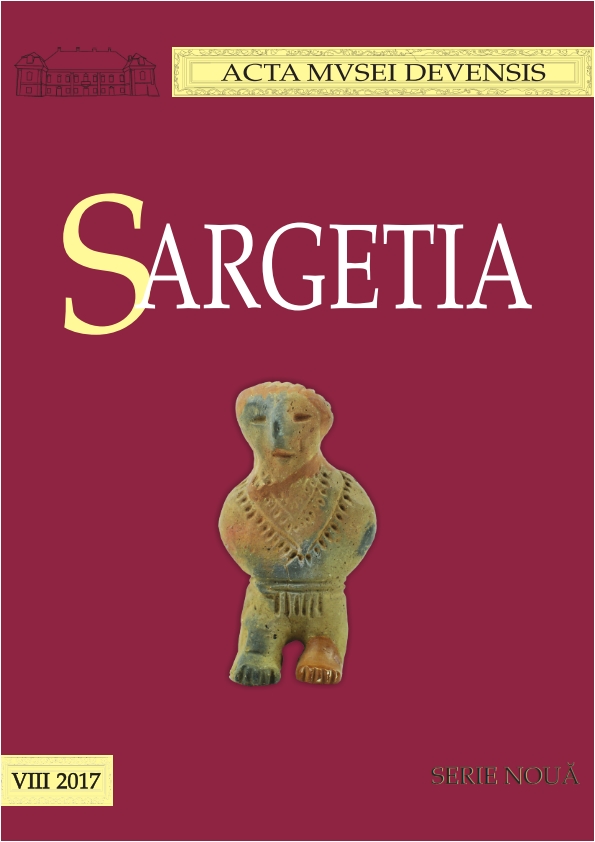O furcă de tors pentru deget din epoca romană descoperită la Apulum – Colonia Aurelia Apulensis
The Roman Finger Distaff Discovered at Apulum – Colonia Aurelia Apulensis
Author(s): Mihaela BleoancăSubject(s): History, Archaeology
Published by: Editura Altip
Keywords: distaff; bone; Roman period; Apulum
Summary/Abstract: This article presents a Roman finger distaff discovered during a preventive archaeological research in Colonia Aurelia Apulensis (Alba Iulia department, the Partoş quarter) (Pl. I/2) in 2016. Due to the extremely low number of pieces discovered in Upper Dacia, we therefore consider its introduction in the scientific archaeological circuit to be important for completing the knowledge we have concerning these artefacts, as it is unique in the Upper Dacia archaeological research.The piece in discussion is a grooved turned through and smoothed bone of 16 cm length. In its lower part, the distaff has a ring of circular shape on the inside and irregular on the outside, having an external diameter of 2.65 cm and an inner diameter of 1.68 cm. It is decorated with two protuberances, while a third one is in the finger section. The ring is separated of the fork handle through the presence of an undecorated cylindrical neck. The fork handle has a cylindrical shape, adorned with channels having a diameter of 0.75 × 0.58 cm and a length of 12.24 cm, and being oval in section. In its upper section, there is a circular rod in the continuation of which one can find a cone form with a diameter of 0.74 × 0.58 cm and a width of 0.72 cm (Pl. I/1a-1b).Besides the finger fork spinner we are presenting other pieces from the same category discovered in Upper Dacia less known, but they are fragmentary. Two of these have Apulum as their origin. One can be seen in the National Museum of the Union Alba Iulia, while the other in the National Museum of Transylvanian History. Furthermore, one can also mention an almost complete distaff finger with an unclear origin, though mostly Transylvanian, too. It is known as a distaff finger fragment from the Ulpia Traiana Sarmizegetusa findings. Its authors considered it to be a handle, yet we think to be a distaff finger fragment. Porolissum also offered us another incompleted distaff finger representing the shy-Venus.Some images of women who use distaff have been discovered on the funerary monuments discovered in Dacia, which now are kept in the museums of Turda, Cluj-Napoca and Drobeta Turnu Severin.Moira Clotho has also been bossily represented on a funerary monument with a finger distaff in her hand, while the dead person is at her feet, typically in an attitude of supplication to slow down the thread of life as long as possible.Two walls of the aedicula, having Ampelum as their origin, are shown to the public and they must be a pair, concerning their dimension and adornment. One of them presents Clotho with a finger distaff in her left hand and the flax in her right hand, while the other wall presents Atropos having a hank in his left hand. The position of these two gods implies the presence of Lachesis, the other member of the triad, in the background of each character as a member of the triad. A wall of the aedicula from Potaissa shows the same image. Clotho stands being dressed in chiton over bearing a mantle. In her right hand, she has a finger distaff towards one can visibly see a thread from the flax which she was holding in her left hand (the missing fragment). In front of her, there is a naked child, whose hands are begging her.
Journal: Sargetia. Acta Musei Devensis
- Issue Year: 2017
- Issue No: 8
- Page Range: 205-212
- Page Count: 8
- Language: Romanian

